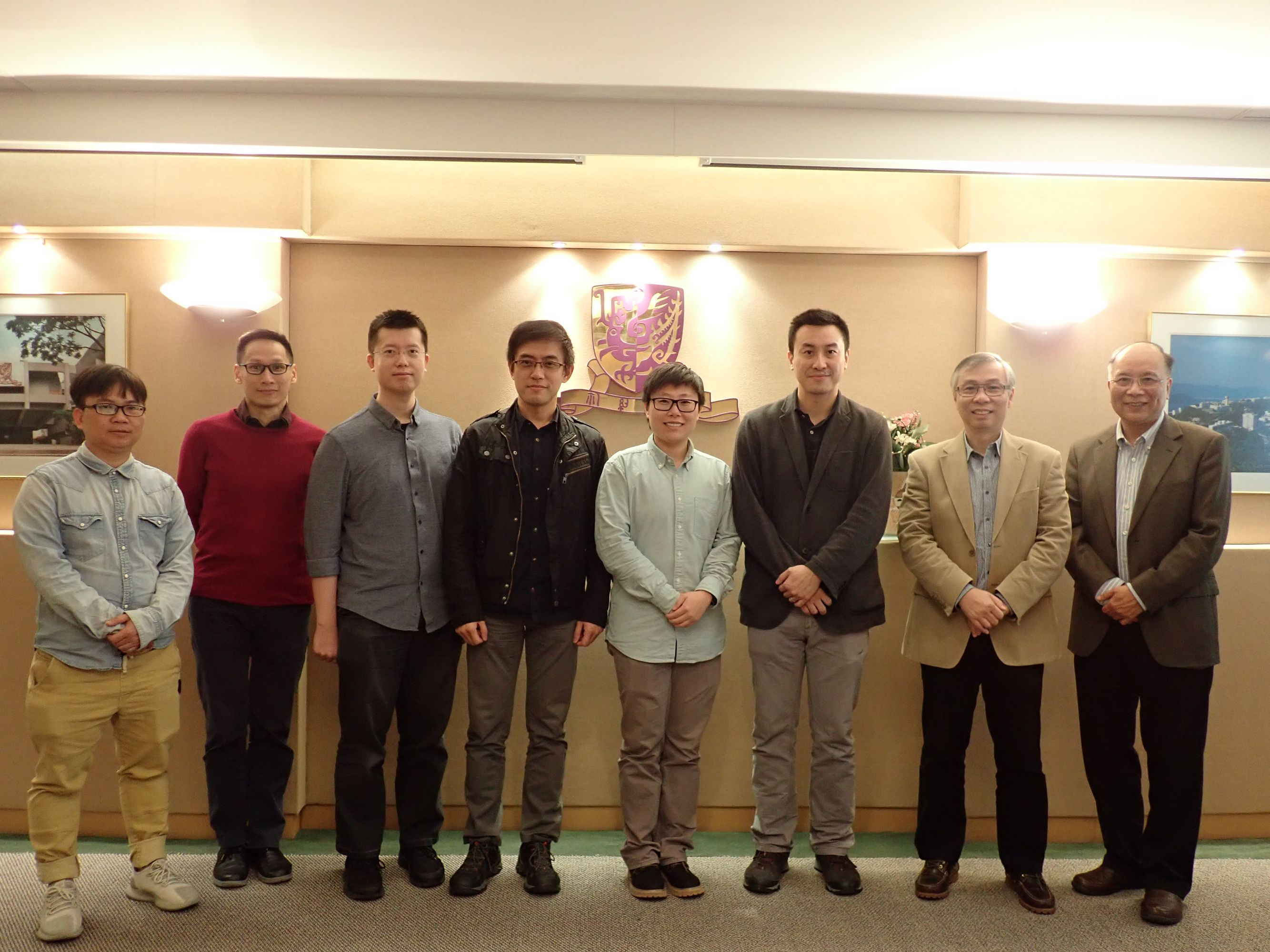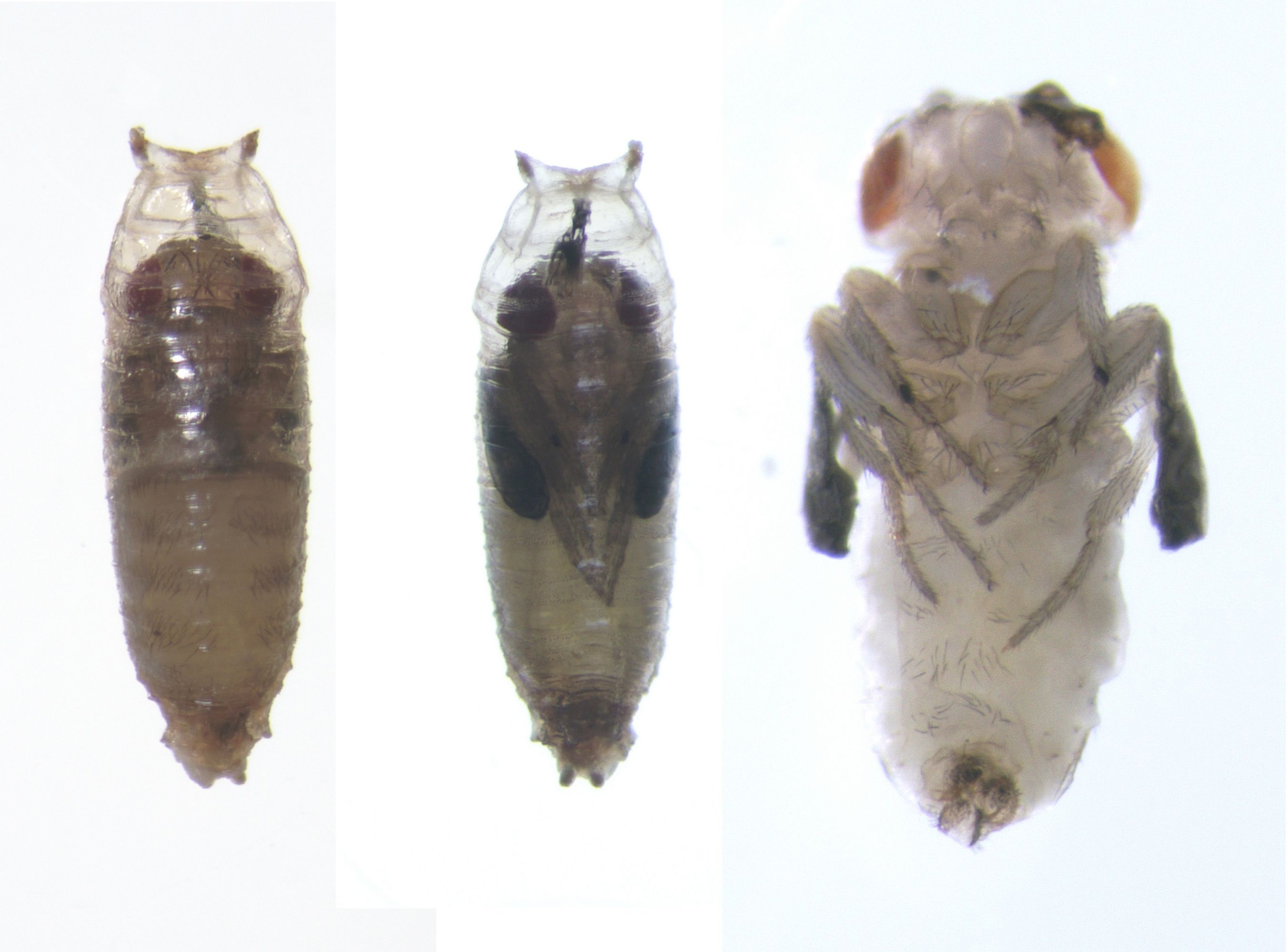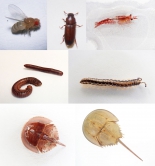CUHK
News Centre
CUHK Study Reveals New Evidence for Evolution and Identifies Novel Candidates for Conserving Biodiversity and Improving Agriculture and Aquaculture
Researchers at the School of Life Sciences at The Chinese University of Hong Kong (CUHK) have recently discovered that arthropods shared a common regulatory mechanism for their hormones, providing new evidence for Darwinian evolution. They also identified novel candidates for controlling arthropod numbers, such as preserving or promoting endangered species, combating agricultural pests, and improving aquaculture, via manipulating their hormones. These findings and the discovery have been recently published in the Proceedings of the Royal Society B.
Arthropods and sesquiterpenoids
The Arthropoda contains the majority of terrestrial and aquatic animal species, including insects, crustaceans (e.g. shrimp, crab, lobster), chelicerates (e.g. spider, horseshoe crab, scorpion), and myriapods (e.g. centipede and millipede). Understanding their evolution is therefore a central question in biology. Some hormones named sesquiterpenoids, which include juvenile hormones, control the arthropods’ development, reproduction, metamorphic modes, molting, novel behavior such as eusociality, and morphological structures such as wing development. Therefore, the regulation of the expression of genes that affect the biosynthesis and actions of sesquiterpenoids plays an important role in the evolution of arthropod morphology and adaptation to diverse habitats. However, the precise roles noncoding RNAs such as microRNAs, previously thought of as junk, play during these processes are remained unknown.
The research findings provide evidence for Darwinian evolution
The CUHK researchers, including Prof. Jerome H.L. Hui, Dr. Zhe Qu, Prof. Edwin Ho Yin Chan, Prof. Ting Fung Chan, Prof. Ka Hou Chu, Prof. Alex Chun Koon, Prof. Hon-ming Lam and Mr. Wenyan Nong of the School of Life Sciences, have identified, for the first time, a set of noncoding RNAs (microRNAs) that interact with genes from these hormonal pathways in different arthropods. As demonstrated in their study, manipulating these microRNAs will result in changes in the juvenile hormone level, and cause genital organ misorientation (i.e. sterility) and pupae lethality in the fruit fly.
With the discovery that these microRNAs not only regulate the hormonal pathway genes in insects, but also in other arthropods, this study provides convincing evidence that noncoding RNAs regulation of sesquiterpenoid hormones was already established in the last common ancestor of arthropods, which became extinct 530 million years ago.
In addition to providing new lines of evidence to support Darwinian evolution, the authors have also found that this kind of microRNA regulation of the hormone pathway genes evolves slightly differently in varied species, which could become new targets for applications in conservation, agriculture, and aquaculture. ‘As hormonal pathways are major targets for the development of new approaches to agricultural pest management, disease vector control, preserving or promoting endangered species, and improvements in aquaculture productivity, study of the lineage-specific microRNAs that regulate sesquiterpenoid pathways can provide leads for identifying targets for designing new, specific and affordable strategies suitable for arthropod control,’ said Prof. Jerome Hui.
This research was supported by the RGC ECS grant 14103516.
About Jerome H. L. Hui
Prof. Jerome Hui is the Assistant Professor of the School of Life Sciences, The State Key Laboratory of Agrobiotechnology (Partner Laboratory in The Chinese University of Hong Kong) and Simon FS Li Marine Science Laboratory of The Chinese University of Hong Kong.
CUHK researchers at the School of Life Sciences discover that arthropods share a common regulatory mechanism for their hormones. (From left) Mr. Wenyan Nong, Prof. Edwin Ho Yin Chan, Prof. Alex Chun Koon, Prof. Ting Fung Chan, Dr. Zhe Qu, Prof. Jerome H.L. Hui, Prof. Hon-ming Lam and Prof. Ka Hou Chu.







